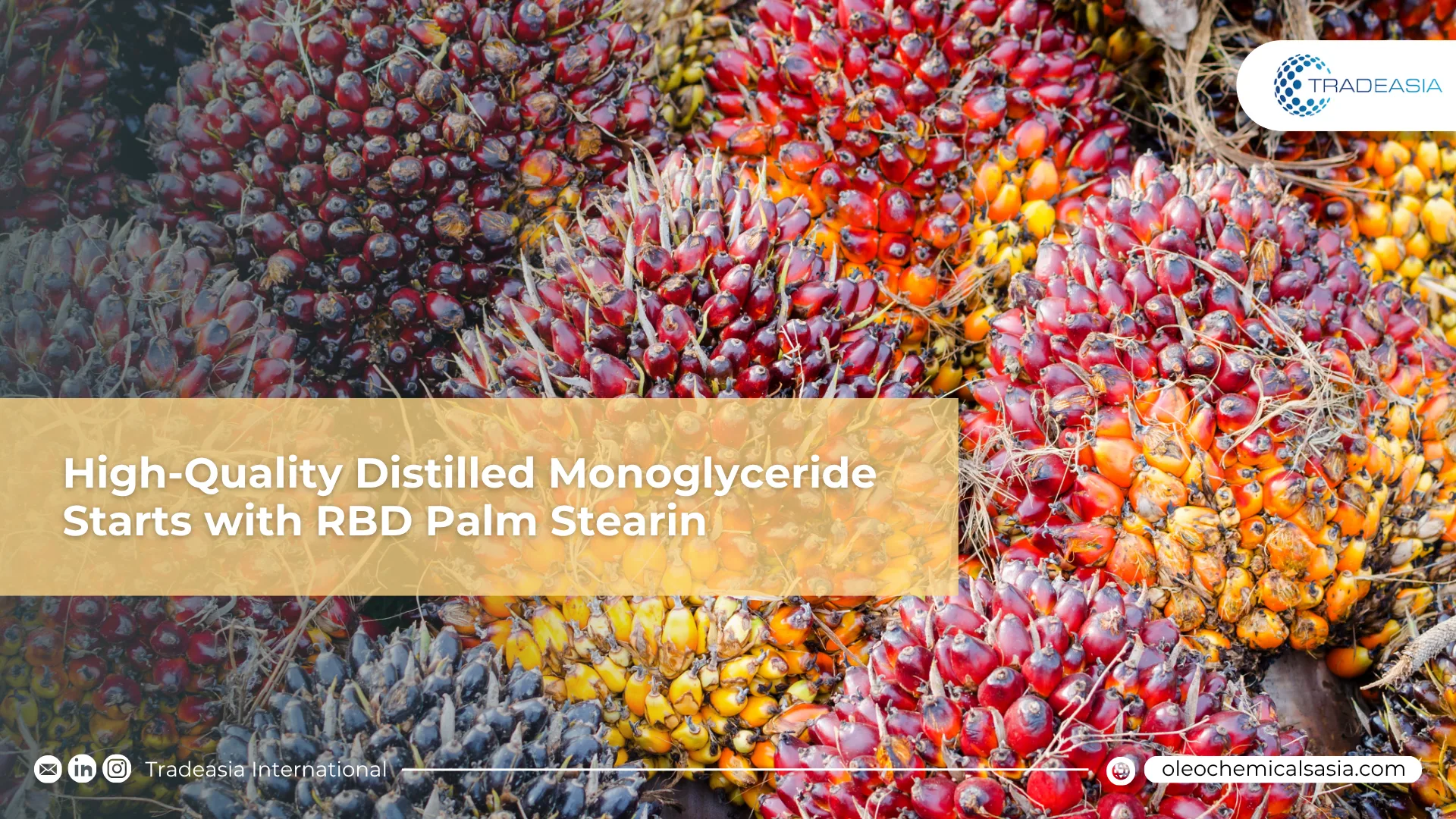The Power of Precision: Why High-Quality Distilled Monoglyceride Starts with RBD Palm Stearin

Table of Content
-
The Ideal Chemical Blueprint for a Superior Emulsifier
-
The Strategic Sourcing Advantage for DMG Production
Distilled Monoglyceride (DMG) is the unsung hero in countless products, from baked goods and confectionery to polymers and personal care items. As a high-performance emulsifier, its role is critical: it creates the perfect texture, ensures stability, and extends shelf life. But what's the secret to producing DMG that consistently delivers these results? The answer lies not just in the manufacturing process, but in choosing the perfect raw material: Refined, Bleached, and Deodorized (RBD) Palm Stearin.
The Ideal Chemical Blueprint for a Superior Emulsifier
The effectiveness of DMG is determined by its molecular structure, which comes directly from its fatty acid source. RBD Palm Stearin offers the ideal chemical backbone for creating high-stability DMG.
The exceptional value of RBD Palm Stearin as a feedstock for Distilled Monoglyceride (DMG) is rooted in its ideal fatty acid composition. As the solid fraction of palm oil, stearin is naturally rich in palmitic acid (C16) and stearic acid (C18), typically found in a highly desirable 55% to 45% ratio. This specific saturated C16-C18 profile serves as the perfect chemical foundation, delivering the precise melting points and functional characteristics required for superior emulsification. For manufacturers, leveraging a feedstock with such a consistent composition allows for a more efficient and stable production process. This consistency directly translates into a higher-quality final DMG, ensuring reliable and predictable performance in any application.
The Strategic Sourcing Advantage for DMG Production
Beyond its technical superiority, using RBD Palm Stearin to produce DMG is a brilliant economic strategy.
As a co-product of the massive palm olein (cooking oil) market, stearin is often available at a significant discount, frequently trading $50 to $100 lower per metric ton than its liquid counterpart. This allows DMG manufacturers to secure a top-tier feedstock at a lower cost, creating a significant competitive advantage. As the global oleochemical market continues its 4.5% CAGR expansion, demand for this specific fraction is set to grow by over 1.2 million metric tons by 2035. For DMG producers, mastering the co-product market isn't just about cost savings; it's about strategic sourcing.
Harnessing the potential of specialized fractions like stearin is key to leading the DMG market. At Tradeasia International, we bridge the gap between raw material potential and finished product excellence, ensuring our clients procure the exact specifications needed to optimize their production.

Leave a Comment